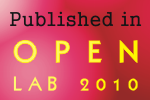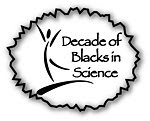Let’s say you’re the parent/mentor/teacher/tutor/friend of a kid super-excited about some aspect of science, technology, engineering or math (STEM). You want to nurture that interest and keep that child engaged, especially during the dull times of school breaks, after-school and perhaps even for school-related projects. Whether you’re an educator or not, sometimes an adult needs reinforcements to help a child or teen find his/her own interest path.
Fostering science, math, and engineering interests in young people is the goal of several organizations, including many of our nation’s publicly funded agencies like NASA and NSF. Informal science education programs and institutions run the range. Some supplement traditional K-12 education lessons. Some provide opportunities for families to spend time together, learning, exploring, and having fun. And still there are some that specifically target under-served audiences to introduce them to pioneers and exciting career opportunities.
STEM Outreach Programs that rock!
2009 was definitely the year science initiatives! It was hailed as
* The Year of Science – with each month focusing on a different science topic;
* The Year of the Gorilla – to raise awareness of the threat of extinction to this beautiful primate;
* The Year of Darwin – to celebrate the 200th year of Charles Darwin’s birth and 150th anniversary of the publication of his book; and
* The Year of Astronomy – to celebrate one of the oldest fields of science To help spread the word of these science initiatives, Science Cafes really took off, especially here in the United States. Often hosted at fun meeting places like restaurants where pizza and beverages are served, people can meet local scientists and learn about interesting topics. Since local communities organize these events, the topics might be related to science initiatives or any other hot topic in the news like sports, herbal medicine, love or health.
To help spread the word of these science initiatives, Science Cafes really took off, especially here in the United States. Often hosted at fun meeting places like restaurants where pizza and beverages are served, people can meet local scientists and learn about interesting topics. Since local communities organize these events, the topics might be related to science initiatives or any other hot topic in the news like sports, herbal medicine, love or health.
But my absolute favorite science outreach efforts are the hands-on organically-grown science and nature outreach programs in individual communities. Here in St. Louis, Missouri, I’ve been involved in a few. My most recent experience was this past summer in the Forest Park Summer Youth Program with Boys & Girls Club kids.
Ocean Discovery Institute of San Diego, California, (formerly Aquatic Adventures) is an awesome program! Diverse young people from this very urban community are engaged in science exploration marine research, and environmental conservation education. This happens to be one of my dream jobs.
Plus, the 2010 San Diego Science Festival sounds like it will be the most anticipated science showcase of greater San Diego. Offering a wide variety of programs and events inspire all ages, “with a special focus on building a pipeline of future scientists and STEM thought-leaders” – festivities include supplemental K-12 Programs, Scientist Speakers series at local schools, a science Exposition, and Scientists in Residence Program. College student scientists represented from disciplines such as Biomedicine, Pharmacology, Engineering, Green Technology, Oceanography, and Astrophysics will work in partnership with San Diego county schools for 6 weeks and create joint project that will be showcased in the 2010 Festival.
I recently discovered ME4E – Multidisciplinary Education for the Environment – also out of the Chicago, Illinois. This organization provides outdoor hands-on activities for schools, scouts, and public groups to learn more about ecology and local wildlife. They seem to have a full calendar of events such as bird counts, wildlife watching, making cast of animal tracks, wetlands and woodlands lesson plans, and urban gardening programs.
The Harris Foundation Summer Science Camp is a free, academic program offered in over 20 different cities in the United Sates. Middle school students participate in a variety of recreational, social, and STEM educational activities at local college campuses. Founded by Dr. Bernard Harris, it is designed to support historically underserved and underrepresented students with limited opportunities.
 Finally, no matter where you live, here is a program for any student in 3rd- 6th grade. Pulse of the Planet Kid’s Science Challenge is a nationwide competition for kids to submit experiments and problems for REAL scientists and engineers to solve. The website is also a fun place to play science games, watch videos, and enter to win awesome prizes and trips! Plus, the site also offers educator resources for teachers and parents, such as pod casts and downloadable curricula.
Finally, no matter where you live, here is a program for any student in 3rd- 6th grade. Pulse of the Planet Kid’s Science Challenge is a nationwide competition for kids to submit experiments and problems for REAL scientists and engineers to solve. The website is also a fun place to play science games, watch videos, and enter to win awesome prizes and trips! Plus, the site also offers educator resources for teachers and parents, such as pod casts and downloadable curricula.




























 Receiving my award from Susan Musante, AIBS Education Office Staff, at the 2009
Receiving my award from Susan Musante, AIBS Education Office Staff, at the 2009 





































